In the spring of 1718, the two-masted Bristol brig ‘Cadogan’, commanded by Captain Skinner, was loading slaves in the port of Gambia on the Sierra Leone coast. Eighteen-year-old Howell Davis was Skinner’s, first mate. The ship was preparing to sail for the West Indies when pirates attacked it just inside the harbor. The captain of the captured brig was ordered to report to the pirate ship with his ship’s papers. And there he was identified:
“Ah, Captain Skinner! How I longed to see you,” the bosun roared, “You owe me a debt; I will collect it from you now!”
Some years ago he had been a sailor on Skinner’s ship. There had been a quarrel, and for disobedience, the captain had sent some sailors to a warship and had not paid them. Discipline in the navy was strict, punishments were severe, and troublemakers had a hard time. In the Bahamas, they fled to the pirates. Now these fugitives were crooked before Skinner, reprisals awaited him. The pirates stripped him naked, tied him to a mast, and began pelting him with broken wine bottles. They inflicted terrible wounds on the victim and competed to see whose shards would penetrate deeper into his body. After enjoying the bloody orgy, the bosun finished off the captain by shooting him in the head.
The pirate captain invited the first mate Davis to join the brotherhood. To which Davis replied that he would rather die. Surprised by the young man’s desperate courage, the pirate released the young seaman and appointed him captain of the brig in place of the murdered Skinner. He handed Davis a sealed envelope, ordering him to open it on the third day.
The brig left port with its cargo of black slaves, and on the third day, the new captain read the contents of the envelope to the crew. The document, duly executed, gave Davis ownership of the brig. This was followed by an order to sail to Brazil, sell the cargo of slaves, and divide the proceeds equally among the crew. The temptation to make good money was great, and Davis suggested that the sailors follow the pirate’s orders. But the crew resisted, demanding to continue the voyage to the West Indies.

Upon arrival in Barbados, the sailors told the authorities what had happened, including the pirate’s offer to Davis. He was arrested and spent three months in jail. But because Davis had no time to become a pirate, he escaped a harsh sentence. But his naval career was over. Discouraged, ambitious, and proud, he took a job as an ordinary sailor on a merchant ship bound for the port of Providence, a former pirate’s nest in the Bahamas. Governor Woods Rogers had already dispersed the pirates there, and Davis managed to get a vacancy on one of two merchant ships bound for the French island of Martinique, which was still full of fortune seekers. Once at sea, he gathered companions, all of whom had been pirates before surrendering to the English king’s proclamation. In the port of Martinique, the mutineers captured both ships. At the council, Davis was unanimously elected captain.
The youngest of the pirate captains, he decided to impose discipline on the ship and drew up a set of rules, which was signed by all his mates. But there were dissenters, and Davis told them to get out. He gave them the second ship, stripping it of everything it could use. In his declaration, the pirate declared war on the world. Such is the ambition of a proud man!
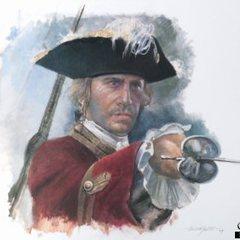
With three dozen of his men, he led the brig to the island of Española. There they captured a 12-gun French ship and as they were cleaning it out, they noticed another sail on the horizon. The captured French captain told Davis that it was probably the 24-gun ship with a crew of 60 that the French had encountered the day before. The captives probably hoped that this would scare the pirates and they would get away. But despite the unequal odds, Davis offered to attack. He proposed to his pirates a plan that had just matured in his mind.
He left half his men on the captured ship and they forced the French to work on the sails. They rushed after another prize, but the captured ship was slow and fell behind. Having caught up with their intended victim, Davis raised the pirate flag and ordered the French to surrender.
However, after counting less than twenty souls on the deck of the pursuer, and seeing that the pirate ship’s armament was much weaker than their own, the French laughed and suggested that the pirates surrender instead. Davis threatened them that his second ship had 30 cannons and its sails could be seen on the horizon, and together they would blow them to pieces, sparing none of the crew. He accompanied his ultimatum with a volley of gunfire.

As the French fired back and tried to escape, the second ship arrived. There, at Davis’s behest, the pirates hoisted the Jolly Roger and herded the prisoners onto the deck, ostensibly to demonstrate their superior numbers. This was Davis’s bluff. A cannon was also fired from the approaching ship, and the two seized the French vessel in a pincer movement. Overwhelmed by the pirates’ aggression, the French surrendered. Davis ordered the captain of the captured ship to come aboard with the cargo documents. Those who arrived with the captain in the dinghy were immediately locked in the hold. Declaring them hostages, Davis led the three ships out to sea.
During the two-day voyage, Davis found the captured ships too sluggish to maneuver and too slow for his purposes. After stripping them of all their valuables, supplies, and weapons, he gave the captives their ships and let them go. Some of the French, admiring the pirates’ tactics, expressed a desire to stay with them. Their captain, unable to bear the disgrace, tried to throw himself overboard but was restrained. And Davis has been called the master of the pirate trick ever since. He decided for himself that it was better to rob settlements on land than to chase ships at sea. So he sailed his brig to the African coast.
Along the way, the pirates captured a Spanish two-masted brigantine and now had two ships and 80 men. In January 1719, their ships appeared at Capo Verde, the main port of the Portuguese island colony. Davis introduced himself to the governor as an English privateer and pirate hunter. His crew was warmly welcomed and allowed to sell their goods. The pirates were so pleased with the easy money, the safe anchorage, and the hospitality of the local beauties that some of them escaped. The life of idleness corrupts, and fearing that the fugitives would talk and expose his game to the authorities, Davis hoisted the sails of his ships at the first breeze and they left the harbor. Within a few weeks, they robbed several merchant vessels and captured a large, fast frigate, which Davis fitted with 26 guns and made his flagship, naming it the ‘King James’.
He now had three ships with holds filled with goods, and a hundred cutthroats under his command.

At the end of February, their pirate fleet entered one of Sierra Leone’s ports to take on water and provisions. There Davis again introduced himself as an English privateer, but the governor did not believe him and whispered to the head of the garrison to be on alert. Seeing the suspicious looks of the guards, the pirate smelt something hot, and his ‘diplomats’ left. At midnight they attacked the fort, but the entire population of the area was alerted and the shooting began. Leaving two dozen of their cronies dead on the shore, the pirates fled to their ships and washed out of the harbor.
They spent a few months on the high seas, joining forces with the French pirate Le Vasse. Together they managed to capture six ships loaded with goods. After dividing the booty, the pirates scattered. The loot sold well in the coastal settlements and Davis continued to have good luck. In May, he captured two slave ships off the Ivory Coast, one of which was so suitable for the pirates that Davis added a ship to his fleet and named the prize ‘Royal Hunter’. The lucky pirate’s idea was to raid a fort in the port of Gambia on the coast of Guinea. He had started his career on a ship carrying slaves from Africa to the New World and knew the place well. There was a huge slave market in that port and the fort’s coffers were always full of silver and gold. But his cronies knew the fort was armed with cannons and had a large army of soldiers. None of them wanted to risk their heads. So Davis laid out his plan to take the fort by stealth. Everyone liked the plan. They sank two of their worn-out ships, leaving a few reliable ones.
By June 1719 they had reached their destination. Davis left one ship in a secluded cove nearby. On the second, the pirates hid cannons to make her look like a harmless peddler. Everyone was ordered to hide in the hold, with a few sailors left on deck to handle the sails. The ship entered the harbor and dropped anchor. The authorities did not suspect the strangers and they were allowed to anchor. In the dinghy that went ashore was the captain, dressed in a gentleman’s camisole, with an assistant, a doctor, and six oarsmen, all dressed in English naval jackets. On landing, the delegation was taken to the fort to see the governor. Satisfying his curiosity, Davis kindly informed him that their ship was from Liverpool and they were on their way to Senegal, where they thought they would exchange goods for elephant tusks. But there they had encountered French pirates and miraculously escaped, fleeing to the Gambia where they hoped to sell or trade their goods. Davis said his ship’s hold was full of roofing iron, then the most sought-after commodity in the colonies. The interested governor naturally agreed to the exchange, invited the delegation to dinner, and asked if they had any good liquor. Davis replied that he had some excellent scotch and would bring a case for the meal. With that, the delegation left.
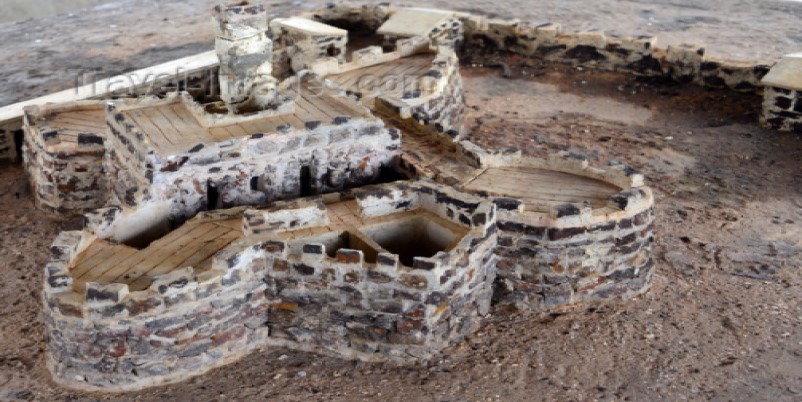
While at the fort, Davis memorized everything and when he returned to the ship, he drew the location of posts and guards in it. The crew discussed the plan. The captain took 20 men with him and ordered each to hide two loaded muskets in their clothes and wait for the signal when he would fire from the window of the governor’s office. At that signal, those who came with him were to disarm the guards, and those who remained on the ship were to immediately start firing on the fort from all the cannons and send the men ashore.
Davis returned with a case of whisky, and, delighted with the gift, the governor invited his guest to drink punch in his office. Meanwhile, the pirates, who had arrived with the captain, showed a friendly curiosity, and scattered about the fort talking to the soldiers. At the proper moment, Davis put his musket to the governor’s head and ordered him to surrender the fort. He fired a shot through the window, and at this signal the ship’s cannons began firing, sending cannonballs into the fort’s walls. The pirates who arrived with Davis attacked the guards, and those who resisted were killed on the spot. Others were locked in the casemate by pirates who threatened to blow it up. The garrison surrendered. And then the pirates learned that they were too late: the money had sailed a few days before their attack. They were left with a few thousand pounds sterling. Enraged, they even hauled the cooking utensils onto the ship and left the harbor. But if Davis had tortured the governor, he would have learned that a hundred bags of silver coins were hidden in a secret cellar of the fort. For the safety of this cache, the governor was pardoned by his government.
At sea, Davis met French pirates La Bouchet and Coquelin. For some time they plundered together, but when sharing the booty, greed clouds the mind and in the end, Davis found his companions in fraud: “Coquelin and La Bouchet! I offered you my friendship, but you exchanged it for money! I’m leaving you!”
Youth is naive. What friendship can there be where eyes are blinded by the sparkle of jewels and ears are deafened by the clinking of gold coins…?
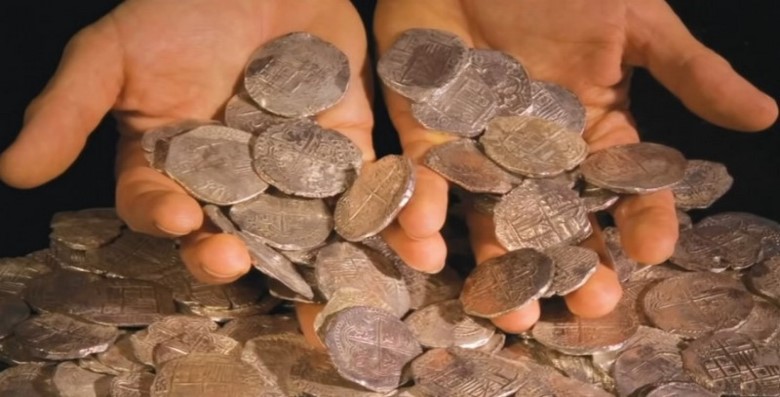
In July, the pirates visited the island of Principe, a Portuguese colony in Central African waters. Davis decided to lure the governor to dine aboard his ship, tempting him with excellent Portuguese wine and a musical performance. The next step would be to take the Governor hostage and demand a ransom for his head from the island authorities. Earlier he had done the same thing on another island, having received a ransom of two thousand gold coins for the governor. But this time it didn’t end the way they had planned.
Davis again introduced himself to the governor as an English privateer and made him a present as a token of friendship. The guests were received with honors and invited to dinner. Davis did not know that one of the captured slaves had escaped from his ship. He knew the language of the pirates and had overheard everything they talked about. Now he told the governor about the visitors. After a hearty meal, the tipsy pirates were singing songs as they returned to their ships. The soldiers ambushed them and shot them all. One managed to get away and he brought the news back to the ships. The pirates left the harbor. Their revenge was brutal. That’s what our next story is about.
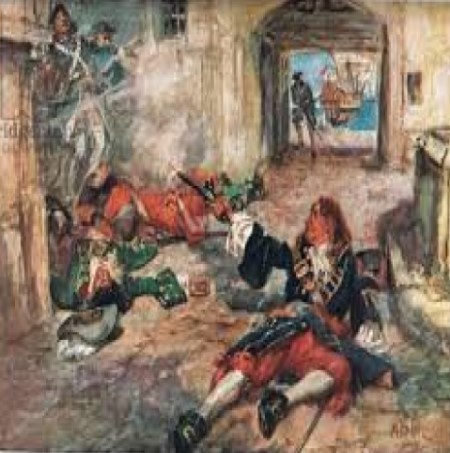
(continued in the story “Black Bart”)
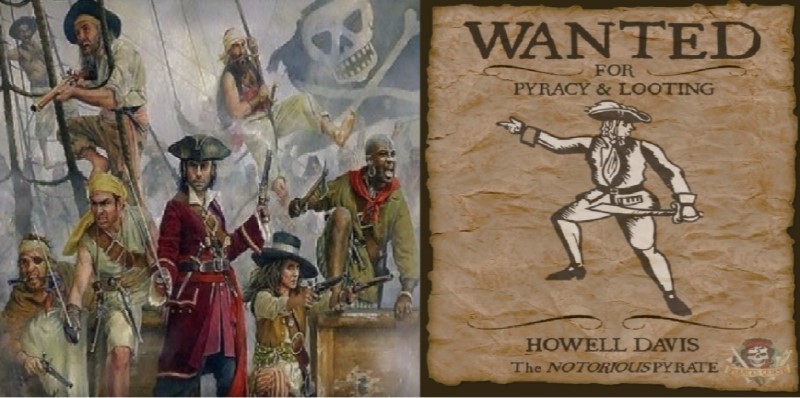
I was examining some of your posts and I think this site is rattling instructive! Keep on posting.
Very interesting details you have observed, thank you for posting.